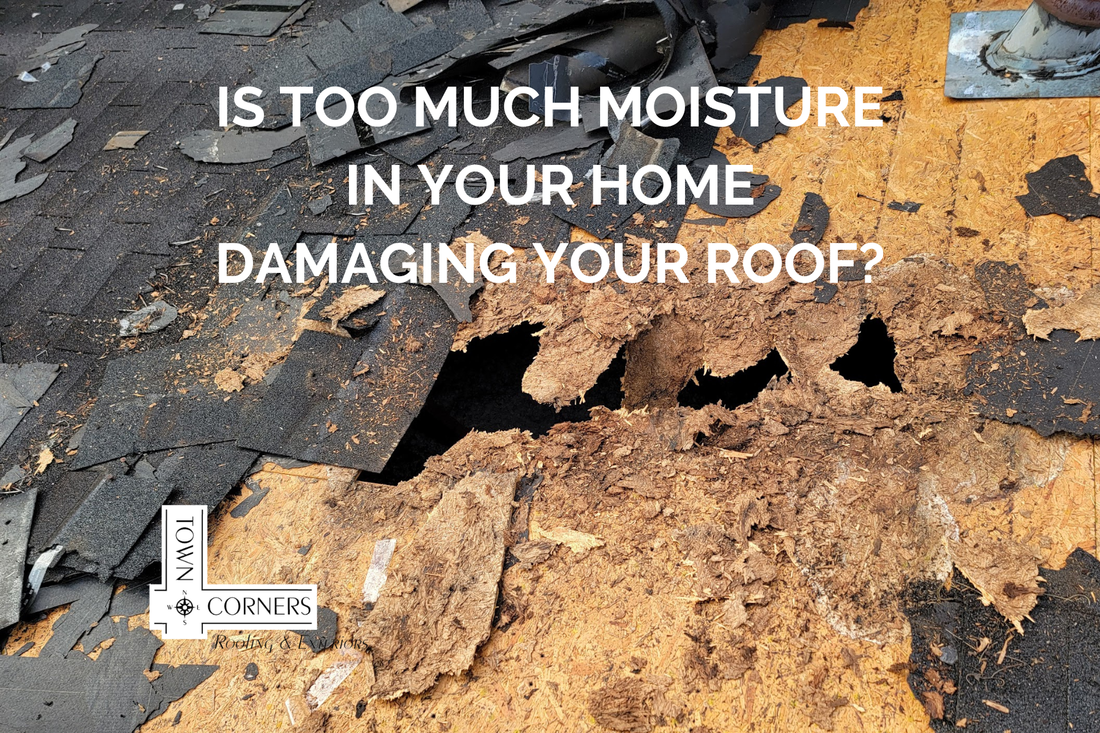|
You first notice discoloration on the ceiling in your kitchen. Maybe it’s just grease or condensation. You try to clean it off and notice it feels wet to the touch. Oh no! Your roof is leaking! Or maybe not. How is one to know?
For any household leak, keep in mind water flows down from the highest point, so the first step in the investigation is to check the space above the leak. If that’s your attic, inspect it during daylight so if there are any holes or cracks in your roof, you can see sunlight peeking through them. Also, bring a flashlight so you can see well enough to detect moisture above your problem spot, both in the attic ceiling and along the floor. Finally, look for pipes running above or near the leaky area. Inspect them to see if they are wet to the touch or the area around them is wet. Plumbing Leak? It is possible the problem is not your roof; it could be a pipe that has come loose, lost its seal, or is cracked. Pipe leaks don’t happen just in the attic. For example, if there is a bathroom above the leak stain, your toilet could be leaking, or the drain in the bathtub may not be sealed tight. Gutter Overflow? If you don’t find any obvious signs in the attic, observe whether the discolored area on your ceiling dries. Then, when it rains, check to see if it is wet to the touch again. This could indicate your gutters are clogged or leaking, which can spill over water into your walls and ceiling. Standing and overflowing water rots the wooden fascia the gutters are installed on, which creates leaks and even mold in your home. To check for cracks in your gutters, besides the visually obvious, look for streaks or stains on your siding behind and under the gutters, or if your house is painted, look for peeling paint in the same area. Roof Top? If you still need clarification on your persistent leaky spot, the top of your roof needs to be inspected for missing or loose shingles, air vents that have come loose, or improperly sealed flashing around the chimney or ventilation pipes. If you have ruled out a plumbing issue, have found your gutters have created roof rot, or would like a professional roof inspection, contact Town Corners Roofing and Exteriors to solve the leaky spot mystery and stop it! Winter is coming; will you know what to do when ice bites at the nails of your roof?
Read on to identify the signs of excessive moisture in your home and understand the control protocol. So, you can look out for your roof and your well-being. Protect Your Home and Health You should take moisture seriously because it leads to the buildup of mildew. It’s a health hazard for all residents and can eventually cause your roof to collapse. Ten Signs of High Humidity In the Home Here are ten signals of a moisture problem:
How Moisture Damages Your Roof Along with the interior of your home, your roof will increasingly crumble when moisture gets out of hand. Extra moisture can occur when you have:
If you have a leak in your roof, the rain will seep through the cracks into the attic. In addition to a roof leak, all other causes of moisture can develop mold that will deteriorate the roof sheathing, and shingles may curl. How to Eliminate Moisture First, you need to find the cause of the moisture infiltration and a way to control it. A roofing professional can assess the situation and determine if it is a leak in your roof, poor ventilation, or another problem. Finally, ensure to waterproof your roof and house and seal all air leakages. There are abundant indications that water is hurting your home. Mold is dangerous; it’s crucial to control the moisture. If you’re experiencing any of these warning signs, call Town Corners Roofing and Exteriors for a roof inspection today! |
<--- BACK TO HOMEMORE ROOFING NEWSArchives
April 2024
|



 RSS Feed
RSS Feed
